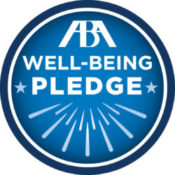COVID-19 Federal Aid Alternatives to PPP and EIDL
By Hoge Fenton | 04.24.2020 | Client Alerts

Although Congress passed another round of funding this week for the Paycheck Protection Program (PPP) and Economic Injury Disaster Loans (EIDLs), due to unprecedented need these programs will likely reach their capacity within a few weeks, if not days. There are, however, alternatives to the PPP and EIDL that are important to highlight.
Main Street Lending Program
The Federal Reserve (the “Fed”) established the Main Street Lending Program (the “Program”) to support lending to small and medium-sized businesses that were in good financial standing before the COVID-19 pandemic. The program operates through two arms: the Main Street New Loan Facility and the Main Street Expanded Loan Facility. While the Main Street Lending Facility process remains undefined, the following information is known about it :
- This program is offering loans of as little as $1 million and as much as $150 million to businesses with up to 10,000 employees or $2.5 billion in 2019 revenue.
- This is a $600 billion program.
- The Fed is expected to release additional guidance on the loan application and bank underwriting requirements shortly.
- Banks are not yet able to take applications.
Other Alternatives to the PPP and EIDL:
Here are two alternatives to the PPP and EIDL that may provide some assistance:
- The Employee Retention Credit (“ERC”)
- The ERC provides a refundable payroll tax credit for 50% of the wages paid by employers during the COVID-19 pandemic up to $5,000 per employee per quarter. This credit is applied to the employer’s quarterly tax liability reported on Form 941.
- An employer who receives a loan under the Paycheck Protection Program is ineligible for the ERC.
- Eligible employers must fall into one of two categories:
- The employer’s business is fully or partially suspended by government order due to COVID-19 during the calendar quarter (a “COVID-19 Related Closure”).
- The employer’s gross receipts are below 50% of the comparable quarter in 2019. Once the employer’s gross receipts go above 80% of a comparable quarter in 2019, they no longer qualify after the end of that quarter (a “COVID-19 Impact”).
- The ERC provides a refundable payroll tax credit for 50% of the wages paid by employers during the COVID-19 pandemic up to $5,000 per employee per quarter. This credit is applied to the employer’s quarterly tax liability reported on Form 941.
- The tax credit is provided for the first $10,000 of compensation paid to an employee and is based on qualified wages paid.
- For employers with more than 100 employees, “qualified wages” are all wages paid to only those employees who are being paid not to work. If employers with 100 or fewer employees, the credit is based on wages paid to all employees, regardless if they worked or not. If the employees worked full time and were paid for full time work, the employer still receives the credit.
- “Qualified wages” also include the employer’s contribution to health-insurance costs (subject to the cap of $10,000) but exclude any amounts already received as tax credit.
- No application is required for the ERC. Eligible employers simply claim a payroll credit against its 6.2% of Social Security tax equal to 50% of the qualified wages it paid during the applicable quarter.
- The refundable ERC is reported on the eligible employer’s return beginning in the second quarter for reporting its liability for Federal Insurance Contributions Act (“FICA”) and Railroad Retirement Tax Act, as applicable. For FICA tax purposes, the quarterly Form 941 is used for reporting for most employers.
- The Internal Revenue Service (“IRS”) does not require a business to wait until it files its payroll tax return to claim the ERC. Instead, eligible employers can be immediately reimbursed for the credit by reducing their required deposits of payroll taxes that have been withheld from employees’ wages by the amount of the credit. If the eligible employer’s employment tax deposits are not sufficient to cover the credit, the employer may receive an advance payment from the IRS by submitting Form 7200, Advance Payment of Employer Credits Due to COVID-19.
- The credit is claimed on a quarterly basis and is applicable to wages paid between March 13, 2020, and December 31, 2020, for any quarter the business suffered a COVID-19 Related Closure or a COVID-19 Impact.
- Employer Payroll Tax Deferral
-
- Employers can defer without penalty the deposit and payment of applicable employment taxes due for the rest of year.
- Fifty percent (50%) of the deferred taxes must be repaid by December 31, 2021, with the remaining due by December 31, 2022.
- “Applicable employment taxes” include the employer’s portion of the social security tax that would otherwise be required to be made from March 27 until December 31, 2020.
- Employers who receive a loan under the Paycheck Protection Program are not eligible for this payroll tax deferral once their loan is forgiven.
- Except for the limitation for employers who receive a loan under the Paycheck Protection Program, all employers are eligible for the payroll tax deferral.
If you have any questions about how these provisions of the CARES Act may apply to your business, please contact Hoge Fenton’s COVID-19 Rapid Response Team.
 |
 |
 |
| Embert Madison, Jr.
Attorney Corporate & Bus Law +1.925.460.3370 |
Darlene Chiang
Of Counsel Corporate & Bus Law +1.925.460.3367 |
Sarju Naran
Shareholder/Chair Employment Law +1.408.947.2456 |
This information is provided as an educational service by Hoge Fenton for clients and friends of the firm. This communique is an overview only, and should not be construed as legal advice or advice to take any specific action. Please be sure to consult a knowledgeable professional with assistance with your particular legal issue. © 2020 Hoge Fenton













